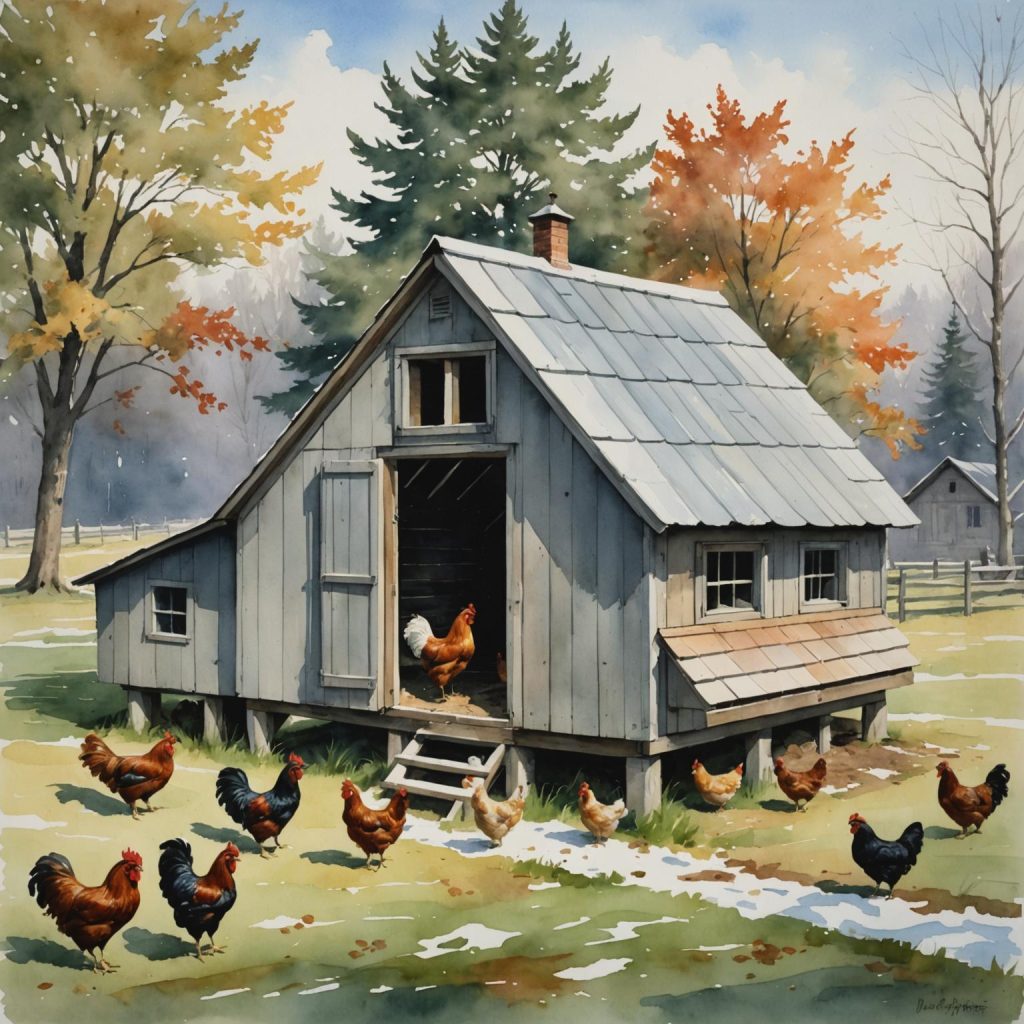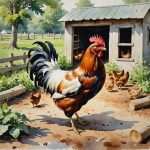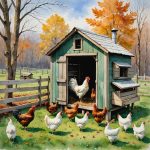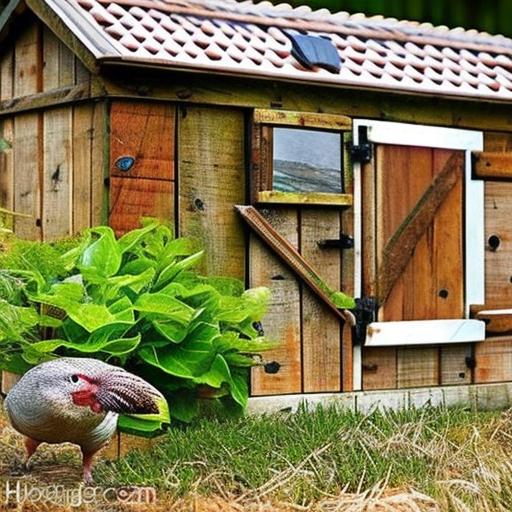As winter creeps in and the chill of the season settles in the air, chicken keepers may find themselves wondering just how much ventilation their coop really needs to keep their feathered friends pleasant and healthy. Let’s delve into the importance of proper ventilation in a chicken coop during the cold winter months and explore the key factors to consider when ensuring a cozy and well-ventilated home for your flock.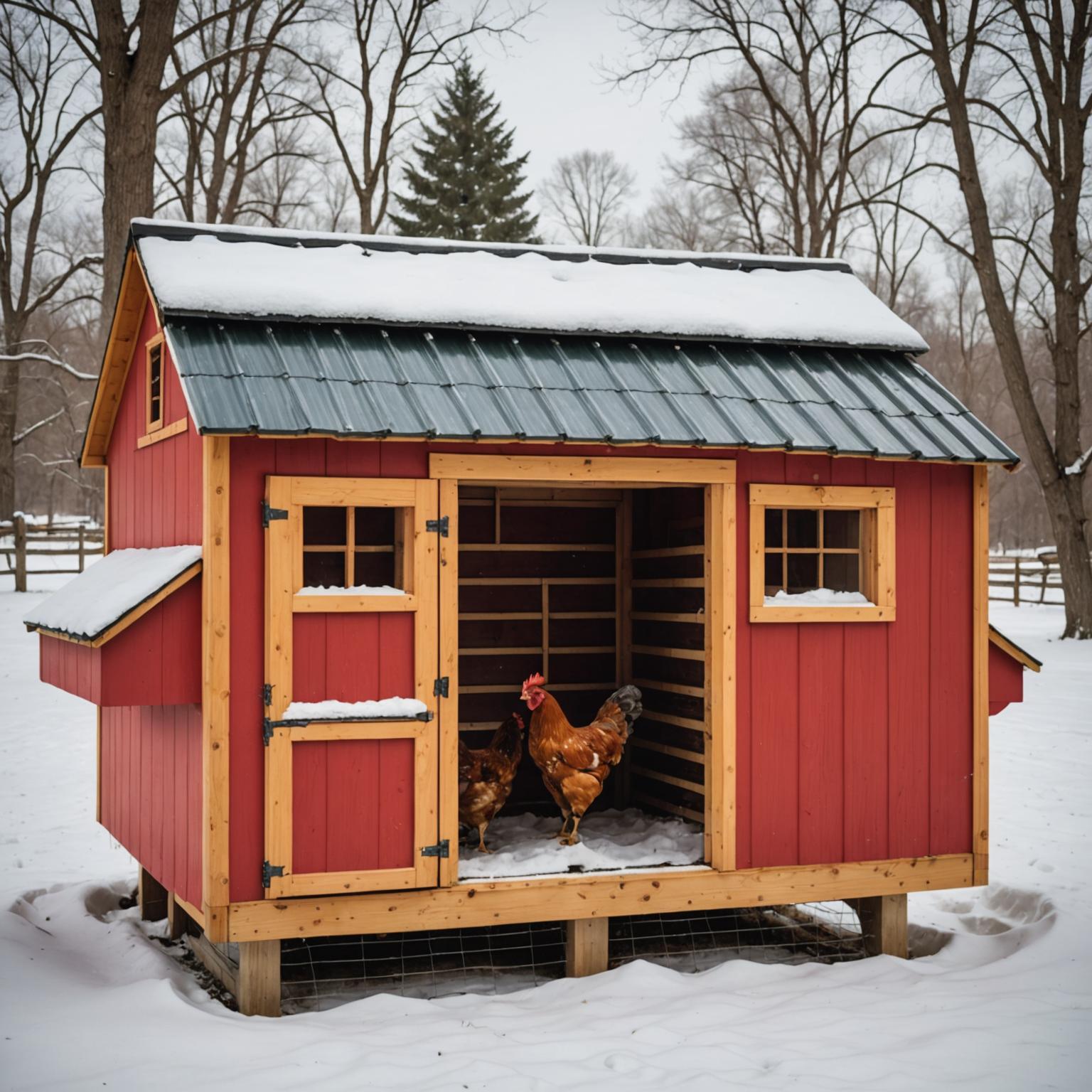
Table of Contents
- 1 Ensuring Proper Air Circulation in Your Chicken Coop During Winter
- 2 Factors to Consider When determining Ventilation Needs for Chickens in Cold Weather
- 3 Strategies for Maintaining Optimal Ventilation in Your Chicken Coop Throughout the Winter Months
- 4 Monitoring and adjusting Ventilation Levels to Keep Chickens Healthy and Happy
- 5 Q&A
- 6 Insights and Conclusions
Ensuring Proper Air Circulation in Your Chicken Coop During Winter
When it comes to , adequate ventilation is key.But just how much ventilation does a chicken coop need in the colder months? It’s importent to strike a balance between keeping your feathered friends warm and ensuring good airflow to prevent moisture buildup, which can lead to respiratory issues and frostbite.
One general guideline to follow is the “Rule of Thumb” for ventilation, which recommends providing 1 square foot of ventilation per every 10 square feet of floor space in your chicken coop. This can be achieved through a combination of windows, vents, and openings that can be adjusted as needed to regulate airflow. Additionally, installing a ridge vent or cupola can help to create a natural chimney effect, drawing warm, moisture-laden air out of the coop while allowing fresh air to enter from lower vents. Remember,proper ventilation is essential for your chickens’ health and comfort,so don’t overlook this important aspect of winter coop management!
Factors to Consider When determining Ventilation Needs for Chickens in Cold Weather
In cold weather,it’s essential to ensure that your chicken coop has adequate ventilation to maintain the health and well-being of your flock. Proper ventilation helps to remove moisture, ammonia, and airborne pathogens that can build up in a confined space, leading to respiratory issues and other health problems for your chickens. To determine the ventilation needs for your coop in the winter, consider the following factors:
- Size of the coop: The size of your chicken coop will affect how much ventilation is needed. A larger coop will require more ventilation to ensure proper air circulation.
- Number of chickens: The number of chickens in your coop will also impact ventilation needs. More chickens mean more moisture and ammonia buildup,requiring increased ventilation.
- Weather conditions: Cold, damp weather will increase the need for ventilation to prevent condensation and moisture buildup in the coop.
Strategies for Maintaining Optimal Ventilation in Your Chicken Coop Throughout the Winter Months
When it comes to maintaining optimal ventilation in your chicken coop during the winter months, there are several key strategies to keep in mind. First and foremost, it’s important to ensure that there is enough fresh air circulating throughout the coop to prevent the buildup of harmful gases such as ammonia. This can be achieved by creating a balance between ventilation and insulation to keep your feathered friends warm and healthy.
One way to achieve this balance is by installing adjustable vents that can be opened or closed depending on the weather conditions. Additionally, positioning the vents at different heights can help to create a natural airflow within the coop.It’s also important to keep the bedding dry and clean to prevent the growth of mold and bacteria. By following these simple strategies, you can ensure that your chickens stay happy and healthy throughout the winter months.
Monitoring and adjusting Ventilation Levels to Keep Chickens Healthy and Happy
During the winter months, it is indeed crucial to monitor and adjust the ventilation levels in your chicken coop to ensure that your feathered friends stay healthy and happy. Proper ventilation helps to regulate the moisture levels inside the coop,preventing issues such as respiratory problems and frostbite. So, how much ventilation does a chicken coop need in winter?
To determine the right amount of ventilation for your chicken coop during the colder months, consider the following factors:
- Number of chickens: The more chickens you have in the coop, the more ventilation you will need to prevent excess moisture buildup.
- Size of the coop: A larger coop will require more ventilation to ensure proper air circulation.
- Local climate: If you live in a especially cold or humid climate, you may need to adjust your ventilation levels accordingly.
Q&A
Q: How much ventilation does a chicken coop need in winter?
A: Ventilation is crucial for maintaining a healthy habitat in a chicken coop, even during the colder months. It prevents the build-up of harmful gases like ammonia and helps regulate humidity levels.
Q: Why is ventilation important in the winter?
A: Proper ventilation in winter is important to prevent the build-up of moisture in the coop,which can lead to frostbite and respiratory issues in chickens. It also helps remove odors and maintain good air quality.
Q: How can I ensure adequate ventilation in my chicken coop during winter?
A: To ensure adequate ventilation in your chicken coop during winter, consider installing vents near the roof to allow hot, moist air to escape. You can also keep windows cracked open slightly to allow for air circulation without creating drafts.
Q: Should I be concerned about drafts in the coop during winter?
A: While ventilation is important, drafts can be harmful to chickens in the winter. Avoid placing vents or windows directly across from each other to prevent drafts from chilling your chickens. it’s critically important to strike a balance between adequate ventilation and keeping the coop warm.
Insights and Conclusions
As winter arrives and the temperatures drop, ensuring proper ventilation in your chicken coop is crucial to keeping your feathered friends happy and healthy.By providing adequate ventilation, you can prevent moisture buildup and promote good air quality, ultimately creating a comfortable environment for your flock. Remember, a well-ventilated chicken coop is essential year-round, but especially in the winter months. So,take the time to assess your coop’s ventilation needs and make any necessary adjustments. Your chickens will thank you for it!
Meet Walter, the feathered-friend fanatic of Florida! Nestled in the sunshine state, Walter struts through life with his feathered companions, clucking his way to happiness. With a coop that’s fancier than a five-star hotel, he’s the Don Juan of the chicken world. When he’s not teaching his hens to do the cha-cha, you’ll find him in a heated debate with his prized rooster, Sir Clucks-a-Lot. Walter’s poultry passion is no yolk; he’s the sunny-side-up guy you never knew you needed in your flock of friends!

